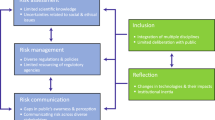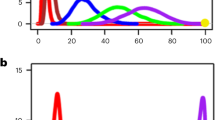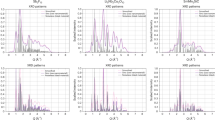Abstract
Understanding emerging trends in public perceptions of nanomaterials is critically important for those who regulate risks. A number of surveys have explored public perceptions of their risks and benefits. In this paper we meta-analyse these surveys to assess the extent to which the following four hypotheses derived from previous studies of new technologies might be said to be valid for nanotechnologies: risk aversion will prevail over benefit appreciation; an increase in knowledge will not result in reduced aversion to risks; judgements will be malleable and subject to persuasion given risk-centric information; and contextual, psychometric and attitudinal predictors of perceived risk from prior studies can help anticipate future perceptions of nanotechnologies. We find that half the public has at least some familiarity with nanotechnology, and those who perceive greater benefits outnumber those who perceive greater risks by 3 to 1. However, a large minority of those surveyed (44%) is unsure, suggesting that risk judgements are highly malleable. Nanotechnology risk perceptions also appear to contradict some long-standing findings. In particular, unfamiliarity with nanotechnology is, contrary to expectations, not strongly associated with risk aversion and reduced ‘knowledge deficits’ are correlated with positive perceptions in this early and controversy-free period. Psychometric variables, trust and affect continue to drive risk perceptions in this new context, although the influence of both trust and affect is mediated, even reversed, by demographic and cultural variables. Given the potential malleability of perceptions, novel methods for understanding future public responses to nanotechnologies will need to be developed.
This is a preview of subscription content, access via your institution
Access options
Subscribe to this journal
Receive 12 print issues and online access
$259.00 per year
only $21.58 per issue
Buy this article
- Purchase on SpringerLink
- Instant access to full article PDF
Prices may be subject to local taxes which are calculated during checkout




Similar content being viewed by others
Change history
29 November 2009
In the version of this Article originally published, the data from ref. 50 used in the meta-analysis and plotted in Fig. 2 were incorrect because these data were subsequently corrected in ref. 51. This mistake does not change any of the conclusions of the paper. An error also occurred in plotting the data from ref. 40 in Fig. 2, but the correct data were used in the rest of the paper. Figure 2 (including caption) and the first two sentences of the paragraph beginning "In the nine surveys" on page 754 of this Article have been amended accordingly in the HTML and PDF versions of the Article.
References
Rip, A. Folk theories of nanotechnologists. Sci. Cult. 15, 349–365 (2006).
Nel, A., Xia, T., Madler, L. & Li, N. Toxic potential of materials at the nanolevel. Science 311, 622–627 (2006).
Sparks, P. & Shepherd, R. Public perceptions of the potential hazards associated with food production and food consumption: an empirical study. Risk Anal. 14, 799–806 (1994).
Siegrist, M. A causal model explaining the perception and acceptance of gene technology. J. Appl. Soc. Psychol. 29, 2093–2106 (1999).
Krimsky, S. & Golding, D. Social Theories of Risk 1st edn (Praeger Publishers, 1992).
Edelstein, M. R. Contaminated Communities: Coping with Residential Toxic Exposure 1st edn (Westview Press, 2004).
Erikson, K. A New Species of Trouble: The Human Experience of Modern Disasters 1st edn (WW Norton & Company, 1995).
Kasperson, J. X. & Kasperson, R. E. The Social Contours of Risk 1st edn, Vol. 1 and 2 (Earthscan Publications, 2005).
Pidgeon, N. F., Kasperson, R. E. & Slovic, P. The Social Amplification of Risk 1st edn (Cambridge Univ. Press, 2003).
Slovic, P. Perception of Risk 1st edn (Earthscan Publishers, 2002).
Morgan, M. G. Risk Communication: A Mental Models Approach (Cambridge Univ. Press, 2002).
Wilsdon, J. & Willis, R. See-Through Science: Why Public Engagement Needs to Move Upstream (Demos, 2004).
Davies, J. C. Oversight of Next Generation Nanotechnology (Woodrow Wilson Project on Emerging Nanotechnologies, 2009); available at <http://www.nanotechproject.org/publications/archive/pen18/>.
Freudenburg, W. R. Perceived risk, real risk: social science and the art of probabilistic risk assessment. Science 242, 44–49 (1988).
Stanovich, K. E. & West, R. F. On the relative independence of thinking biases and cognitive ability. J. Pers. Soc. Psychol. 94, 672–695 (2008).
Gilovich, T., Griffin, D. & Kahneman, D. Heuristics and Biases: The Psychology of Intuitive Judgment 1st edn (Cambridge Univ. Press, 2002).
Irwin, A. & Wynne, B. Misunderstanding Science?: The Public Reconstruction of Science and Technology (Cambridge Univ. Press, 1996).
Slovic, P. Perception of risk. Science 236, 280–285 (1987).
Loewenstein, G. F., Weber, E. U., Hsee, C. K. & Welch, N. Risk as feelings. Psychol Bull. 127, 267–286 (2001).
Finucane, M. L., Alhakami, A., Slovic, P. & Johnson, S. M. The affect heuristic in judgments of risks and benefits. J. Behav. Decis. Making 13, 1–17 (2000).
Fischhoff, B., Bostrom, A. & Quadrel, M. J. Risk perception and communication. Annu. Rev. Public Health 14, 183–203 (1993).
Slovic, P. & Peters, E. Risk perception and affect. Curr. Dir. Psychol. Sci. 15, 322–325 (2006).
Peters, E. M., Burraston, B. & Mertz, C. K. An emotion-based model of risk perception and stigma susceptibility: cognitive appraisals of emotion, affective reactivity, worldviews and risk perceptions in the generation of technological stigma. Risk Anal. 24, 1349–1367 (2004).
Flynn, J., Slovic, P. & Mertz, C. K. Gender, race and perception of environmental health risks. Risk Anal. 14, 1101–1108 (1994).
Finucane, M. L., Slovic, P., Mertz, C. K., Flynn, J. & Satterfield, T. A. Gender, race and perceived risk: the white male effect. Health Risk Soc. 2, 159–172 (2000).
Bord, R. J. & O'Connor, R. E. The gender gap in environmental attitudes: the case of perceived vulnerability to risk: research on the environment. Soc. Sci. Quart. 78, 830–840 (1997).
Satterfield, T. A., Mertz, C. K. & Slovic, P. Discrimination, vulnerability and justice in the face of risk. Risk Anal. 24, 115–129 (2004).
Poortinga, W. & Pidgeon, N. F. Exploring the dimensionality of trust in risk regulation. Risk Anal. 23, 961–972 (2003).
Frewer, L. J., Howard, C. & Shepherd, R. Public concerns in the United Kingdom about general and specific applications of genetic engineering: risk, benefit and ethics. Sci. Technol. Hum. Val. 22, 98–124 (1997).
Wildavsky, A. & Dake, K. Theories of risk perception: who fears what and why? Daedalus 119, 41–60 (1990).
Braman, D. & Kahan, D. M. More Statistics, Less Persuasion: A Cultural Theory of Gun-Risk Perceptions (SSRN eLibrary, 2001); available at <http://papers.ssrn.com/sol3/papers.cfm?abstract_id=286205>.
Kraus, N., Malmfors, T. & Slovic, P. Intuitive toxicology: expert and lay judgments of chemical risks. Risk Anal. 12, 215–232 (1992).
Alhakami, A. & Slovic, P. A psychological study of the inverse relationship between perceived risk and perceived benefit. Risk Anal. 14, 1085–1096 (1994).
Morgan, M. et al. Powerline frequency electric and magnetic fields: a pilot study of risk perception. Risk Anal. 5, 139–149 (1985).
Gregory, R., Flynn, J. & Slovic, P. Technological stigma. Am. Sci. 83, 220–223 (May/June, 1995).
Powell, D. & Leiss, W. Mad Cows and Mother's Milk: The Perils of Poor Risk Communication (McGill-Queen's Univ. Press, 1997).
Siegrist, M. The influence of trust and perceptions of risks and benefits on the acceptance of gene technology. Risk Anal. 20, 195–204 (2000).
Slovic, P. in Social Theories of Risk Vol. 1 (eds Krimsky, S. & Golding, D.) 117–152 (Praeger, 1992).
Rosenthal, R. & DiMatteo, M. META-ANALYSIS: recent developments in quantitative methods for literature reviews. Annu. Rev. Psychol. 52, 59–82 (2001).
Cobb, M. D. & Macoubrie, J. Public perceptions about nanotechnology: risks, benefits and trust. J. Nanopart. Res. 6, 395–405 (2004).
Sims Bainbridge, W. Public attitudes toward nanotechnology. J. Nanopart. Res. 4, 561–570 (2002).
Kahan, D. M., Braman, D., Slovic, P., Gastil, J. & Cohen, G. Cultural cognition of the risks and benefits of nanotechnology. Nature Nanotech. 4, 87–90 (2009).
Scheufele, D. A. et al. Scientists worry about some risks more than the public. Nature Nanotech. 2, 732–734 (2007).
Flynn, J., Slovic, P. & Mertz, C. Decidedly different: expert and public views of risks from a radioactive waste repository. Risk Anal. 13, 643–648 (1993).
Sturgis, P. & Allum, N. Science in society: re-evaluating the deficit model of public attitudes. Pub. Und. Sci. 13, 55–74 (2004).
Siegrist, M. & Cvetkovich, G. Perception of hazards: the role of social trust and knowledge. Risk Anal. 20, 713–720 (2000).
Durant, J. in Between Understanding and Trust. The Public, Science and Technology (eds Dierkes, M. & von Grote, C.) 131–156 (Harwood, 2000).
Allum, N., Sturgis, P., Tabourazi, D. & Brunton-Smith, I. Science knowledge and attitudes across cultures: a meta-analysis. Pub. Und. Sci. 17, 35–54 (2008).
Kahan, D. M., Slovic, P., Braman, D., Gastil, J. & Cohen, G. L. Affect, Values and Nanotechnology Risk Perceptions: An Experimental Investigation (SSRN eLibrary, 2007); available at <http://papers.ssrn.com/sol3/papers.cfm?abstract_id=286205>.
Peter, D. Hart Research Associates, I. Report Findings Based on a National Survey of Adults (Woodrow Wilson Project on Emerging Nanotechnologies, 2006); available at <http://www.nanotechproject.org/file_download/files/HartReport.pdf>.
Peter, D. Hart Research Associates, I. Awareness of and Attitudes Toward Nanotechnology and Federal Regulatory Agencies (Woodrow Wilson Project on Emerging Nanotechnologies, 2007); available at <http://www.nanotechproject.org/process/files/5888/hart_nanopoll_2007.pdf>.
Cohen, J. Statistical Power Analysis for the Behavioral Sciences (Academic Press, 1977).
Evans, G. & Durant, J. The relationship between knowledge and attitudes in the public understanding of science in Britain. Pub. Und. Sci. 4, 57–74 (1995).
Lee, C.-J., Scheufele, D. A. & Lewenstein, B. V. Public attitudes toward emerging technologies: examining the interactive effects of cognitions and affect on public attitudes toward nanotechnology. Sci. Commun. 27, 240–267 (2005).
Kahan, D. M. et al. Biased Assimilation, Polarization and Cultural Credibility: An Experimental Study of Nanotechnology Risk Perceptions (SSRN eLibrary, 2008); available at <http://papers.ssrn.com/sol3/papers.cfm?abstract_id=1090044>.
Siegrist, M., Keller, C., Kastenholz, H., Frey, S. & Wiek, A. Laypeople's and experts’ perception of nanotechnology hazards. Risk Assess. 27, 59–69 (2007).
Cobb, M. D. Framing effects on public opinion about nanotechnology. Sci. Commun. 27, 221–239 (2005).
Schutz, H. & Wiedemann, P. M. Framing effects on risk perception of nanotechnology. Pub. Und. Sci. 17, 369–379 (2008).
Pidgeon, N., Harthorn, B. H., Bryant, K. & Rogers-Hayden, T. Deliberating the risks of nanotechnologies for energy and health applications in the United States and United Kingdom. Nature Nanotech. 4, 95–98 (2009).
Siegrist, M., Stampfli, N., Kastenholz, H. & Keller, C. Perceived risks and perceived benefits of different nanotechnology foods and nanotechnology food packaging. Appetite 51, 283–290 (2008).
Renn, O. & Roco, M. Nanotechnology and the need for risk governance. J. Nanopart. Res. 8, 153–191 (2006).
Currall, S. C. New insights into public perceptions. Nature Nanotech. 4, 79–80 (2009).
Lichtenstein, S. & Slovic, P. The Construction of Preference (Cambridge Univ. Press, 2006).
Rao, S. R. et al. Meta-analysis of survey data: application to health services research. Health Serv. Out. Res. Meth. 8, 98–114 (2008).
Sheetz, T., Vidal, J., Pearson, T. D. & Lozano, K. Nanotechnology: awareness and societal concerns. Technol. Soc. 27, 329–345 (2005).
Nanoscience and Nanotechnologies: Opportunities and Uncertainties (Royal Society and Royal Academy of Engineering, 2004); available at <http://www.nanotec.org.uk/finalReport.htm>.
Scheufele, D. & Lewenstein, B. The public and nanotechnology: how citizens make sense of emerging technologies. J. Nanopart. Res. 7, 659–667 (2005).
Scheufele, D. A., Corley, E. A., Shih, T.-j., Dalrymple, K. E. & Ho, S. S. Religious beliefs and public attitudes toward nanotechnology in Europe and the United States. Nature Nanotech. 4, 91–94 (2008).
Smiley Smith, S. E., Hosgood, H. D., Michelson, E. S. & Stowe, M. Americans’ nanotechnology risk perception: assessing opinion change. J. Ind. Ecol. 12, 459–473 (2008).
Kahan, D. M., Braman, D., Slovic, P., Gastil, J. & Cohen, G. L. The Future of Nanotechnology Risk Perceptions: An Experimental Investigation of Two Hypotheses (SSRN eLibrary, 2008); available at <http://papers.ssrn.com/sol3/papers.cfm?abstract_id=1089230>.
Priest, S. The North American opinion climate for nanotechnology and its products: opportunities and challenges. J. Nanopart. Res. 8, 563–568 (2006).
Macoubrie, J. Nanotechnology: public concerns, reasoning and trust in government. Pub. Und. Sci. 15, 221–241 (2006).
Fujita, Y., Yokoyama, H. & Abe, S. Perception of nanotechnology among the general public in Japan—of the NRI Nanotechnology and Society Survey Project. Asia Pac. Nano. Wkly 4, 1–2 (2006).
Currall, S. C., King, E. B., Lane, N., Madera, J. & Turner, S. What drives public acceptance of nanotechnology? Nature Nanotech. 1, 153–155 (2006).
Gaskell, G., Eyck, T., Jackson, J. & Veltri, G. Imagining nanotechnology: cultural support for technological innovation in Europe and the United States. Pub. Und. Sci. 14, 81–90 (2005).
Einsiedel, E. In the public eye: the early landscape of nanotechnology among Canadian and US publics. Azonano 1, 1–10 (2005).
Acknowledgements
This work was supported by Cooperative Agreement 0531184 between the US National Science Foundation (NSF) and the Center for Nanotechnology in Society at University of California, Santa Barbara (UCSB); by Cooperative Agreement EF 0830117 between NSF, the Environmental Protection Agency and the Center for the Environmental Implications of Nanotechnology (UCSB and University of California, Los Angeles), and by an Alexander Graham Bell Graduate Scholarship from the Natural Sciences and Engineering Research Council of Canada.
Author information
Authors and Affiliations
Contributions
T.S. and M.K. conceived and designed the meta-analysis. C.B. and M.K. analysed the data. T.S. wrote the paper, with M.K. and C.B. providing input on original drafts and revisions. B.H.H. and J.C. provided key materials and summaries of studies, and all authors discussed the results and commented on the manuscript.
Corresponding author
Supplementary information
Supplementary information
Supplementary information (PDF 371 kb)
Rights and permissions
About this article
Cite this article
Satterfield, T., Kandlikar, M., Beaudrie, C. et al. Anticipating the perceived risk of nanotechnologies. Nature Nanotech 4, 752–758 (2009). https://doi.org/10.1038/nnano.2009.265
Received:
Accepted:
Published:
Issue date:
DOI: https://doi.org/10.1038/nnano.2009.265
This article is cited by
-
Risk perception associated with an emerging agri-food risk in Europe: plant viruses in agriculture
Agriculture & Food Security (2022)
-
Comparing the effect of zinc oxide and titanium dioxide nanoparticles on the ability of moderately halophilic bacteria to treat wastewater
Scientific Reports (2021)
-
Consumer acceptance of novel food technologies
Nature Food (2020)
-
Expert stakeholders’ perception of nanotechnology: risk, benefit, knowledge, and regulation
Journal of Nanoparticle Research (2019)
-
Market Potential and Economic Impacts of Food Nanotechnology Innovations
Journal of the Knowledge Economy (2019)



